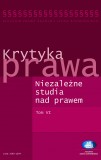Operacje wykonywane przez bankierów rzymskich (argentarii)
Transactions Performed by Roman Bankers (argentarii)
Author(s): Piotr NiczyporukSubject(s): Ancient World, Financial Markets
Published by: Akademia Leona Koźmińskiego
Summary/Abstract: The argentarii participated in various monetary transactions which were of substantial importance in the economic life of ancient Rome. They accepted monetary deposits called depositum regulare made in a proper form. The deposited objects included coins, documents and sometimes other movable property. Money deposited in a regular deposit was placed in labeled moneybags which were equipped with tesserae nummulariae. They had to be returned to the owners in an untouched condition. Depositing cash with bankers as depositum irregulare gave one greater freedom in disposing of it not only in Rome but also outside its borders. The argentarii could invest the capital they received on condition of subsequently transferring an equivalent amount to the deposit maker. The clients deposited money with bankers in the depositum irregulare, to be returned at every request, in the form of tantundem eiusdem generis. Lending operations were also undertaken by argentarii. Loans were often granted at high interest rates to young ambitious nobles. Bankers could also participate in granting marine loans, generating profits from them. Several important changes in conducting the banking business appeared in the second half of the 2nd century BC. The argentarii started to regularly participate in auction sales. The argentarii on the one hand paid to the seller the purchase price and on the other hand they granted short-term loans to the buyers. Quality control and the exchange of coins was another form of banking operations. The argentarii were probably not controllers of quality since there is no proof that other bankers, apart from the nummularii, dealt with controlling coins. Neither did the argentarii engage in recovering their clients’ debts from third parties.
Journal: Krytyka Prawa
- Issue Year: 5/2013
- Issue No: 1
- Page Range: 481-506
- Page Count: 26
- Language: Polish

